
From 1946 to 1952, a unique unit kept peace and worked toward rehabilitation of war-torn Germany and Austria: the US Constabulary. In the air, in jeeps, tanks, and even riding horses, the Constabulary patrolled borders, worked with German police, tracked black marketeers and war criminals, and kept order. Their iconic insignia, incorporating the blue of infantry, red of artillery, and yellow of cavalry branches, often earned them the nicknames "Circle-C Cowboys" and "Lightning Police" among the local populations.
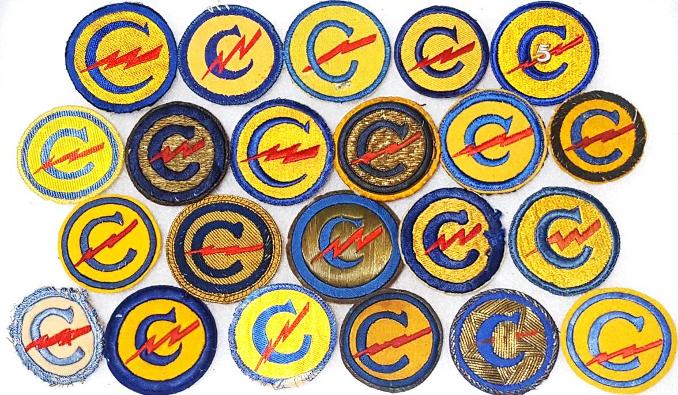
Variations of the Constabulary patch, made in Germany.

Variations of Constabulary Distinctive Insignia
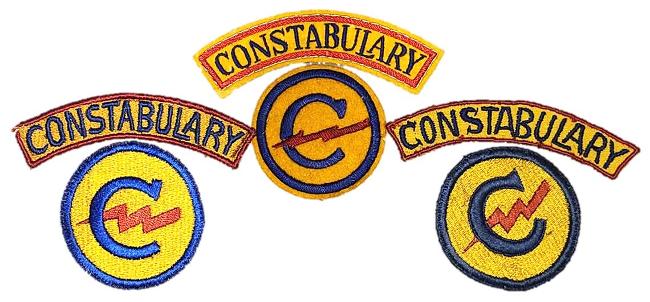
Insignia variations of 16th Cavalry , which served in Berlin
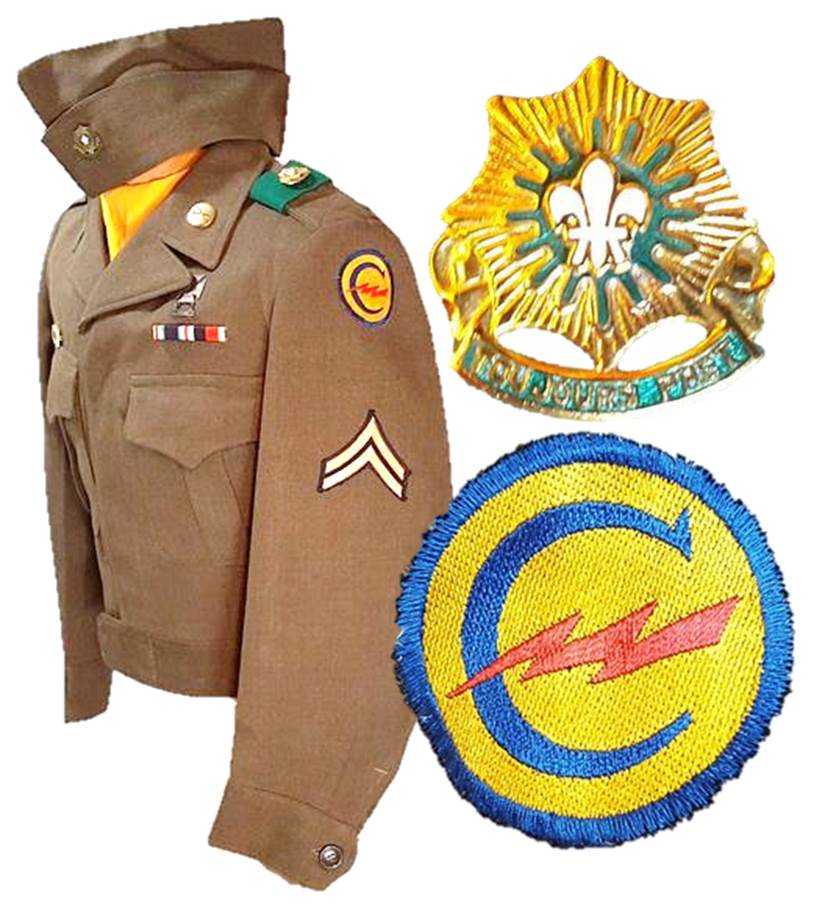
Ike jacket to a trooper from the 2nd Constabulary Regiment, which was based out of Freising, Germany from 1947 onward. This veteran has green leadership stripes and 2nd Cavalry Distinctive Insignia, both on the shoulders and garrison cap. The patch is a German-made bevo variation.
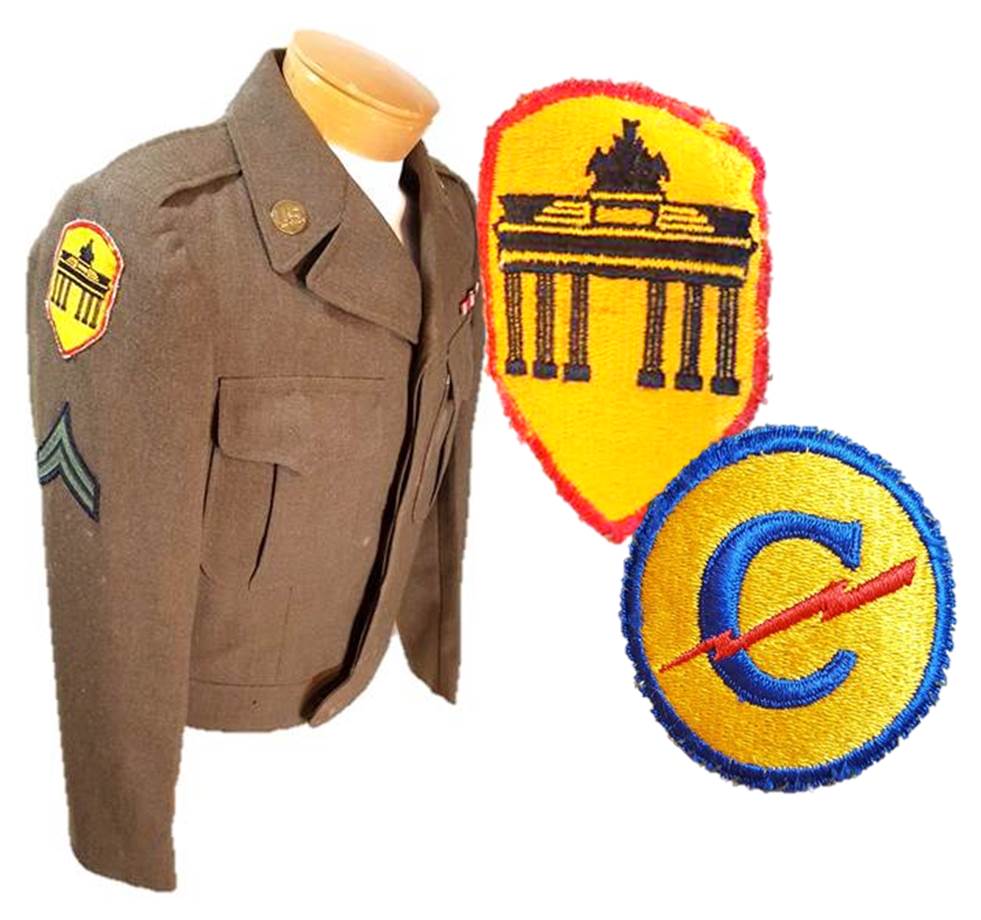
An Ike jacket to a veteran who served in the Berlin District and Constabulary. This unit operated from 1946-1955. This veteran was part of the Military Police and earned both Good Conduct and Army of Occupation medals.
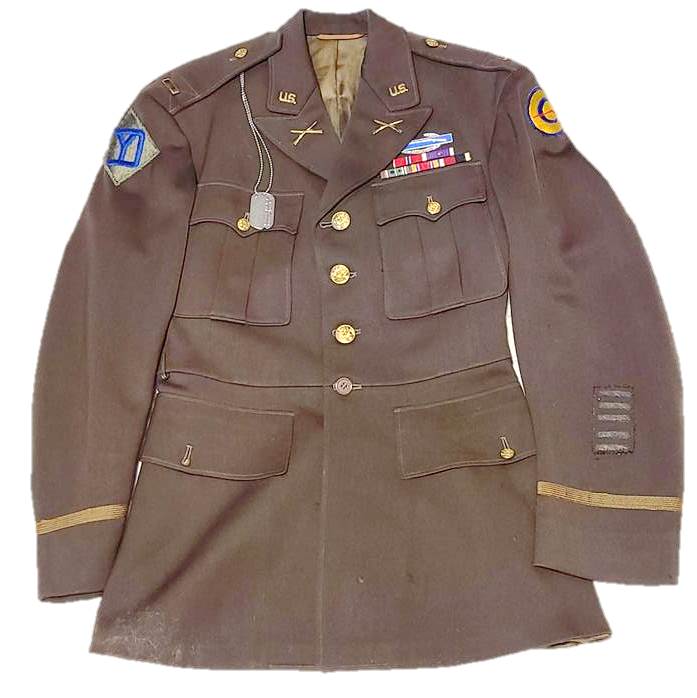
Officer's uniform jacket. This officer earned numerous awards in World War II as part of the 26th Infantry "Yankee" Division.
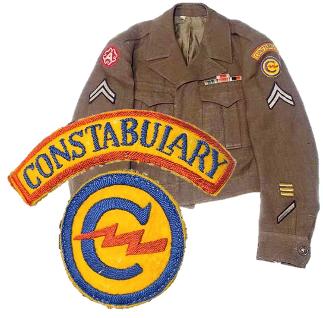
Ike jacket to a member of the 16th Constabulary (Separate), which was stationed in Berlin.
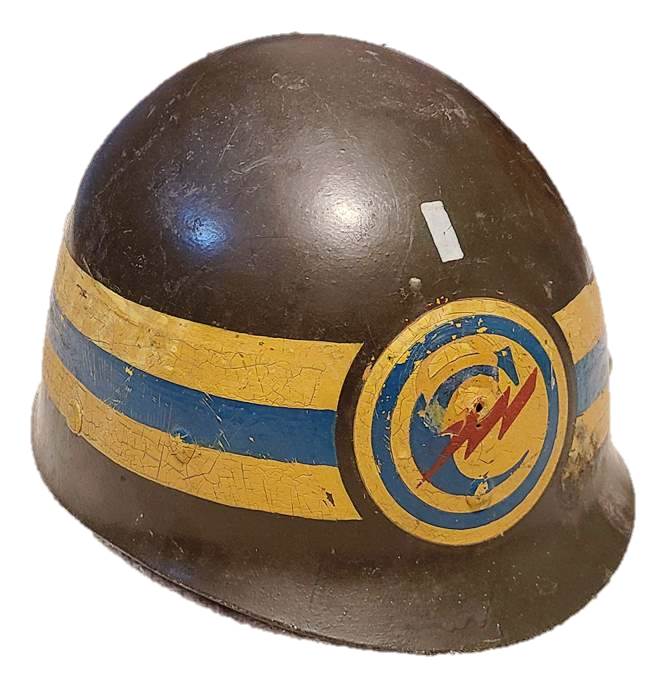
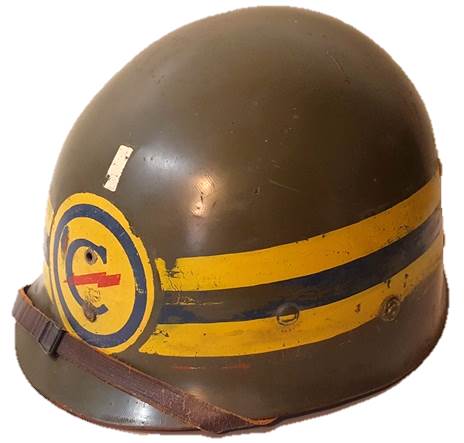

Helmet liners for the US Constabulary forces. These troops policed the American Sector of postwar Germany, conducting traffic stops and border security, assisting displaced persons, stopping black market operations, and hunting war criminals.
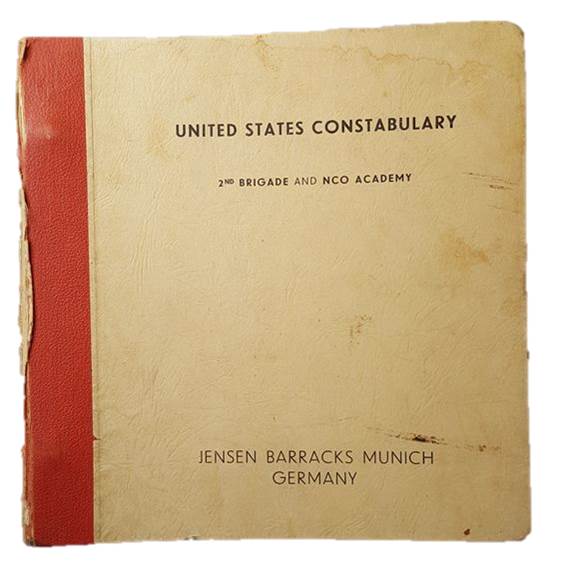
Book from the Constabulary NCO Academy.
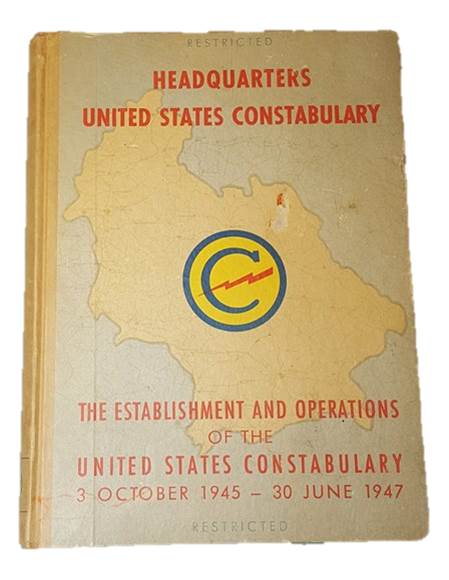
US Constabulary book.
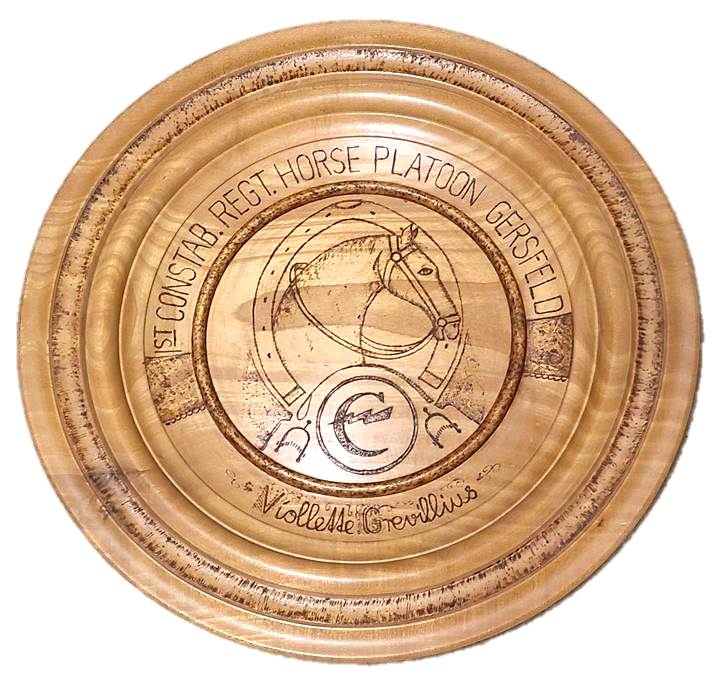
Wooden souvenir plate of the 1st Constabulary Horse Platoon, dated 1948.
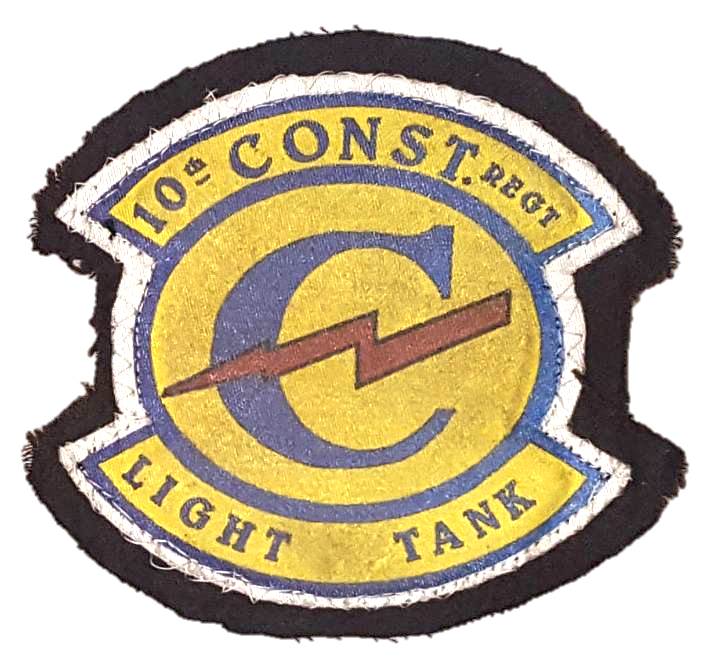
Likely used as a coaster or decorative item, this 10th Constabulary Light Tank patch shows how tabs were often integrated above and below the Constabulary insignia for unit designations.

A worn but original set of German-made bullion from a veteran of the 16th Constabulary (Separate) in Berlin. Moth holes on the CIB reveal use of German newspaper in the patch construction.
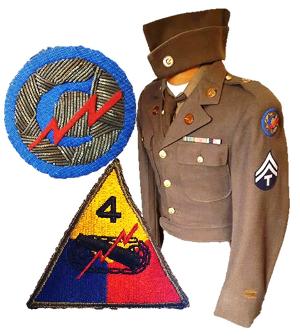
Ike jacket and cap from a trooper from E Company, 35th Constabulary Squadron in Germany from 1946-7. This veteran was from Lake Forest, IL and served in the 4th Armored Division until the war's end and then transferred to the Constabulary.
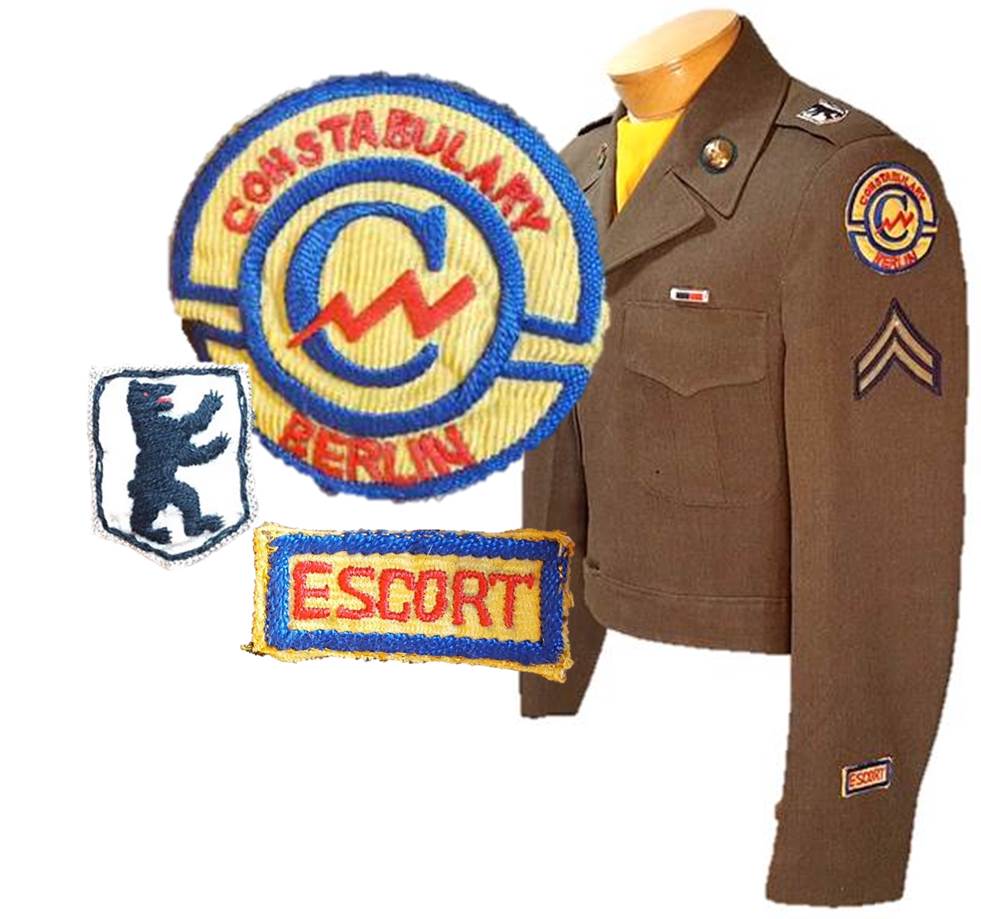
A custom Ike jacket of a corporal of the 16th Constabulary Squadron (separate), which served in Berlin. This jacket has many custom features, including a lucite ribbon bar, felt-backed collar discs, embroidered Distinctive Insignia, and a shoulder patch with both upper and lower integrated tabs. It likely dates c.1950 to the last year of the 16th's service in Berlin.

Officer's jacket of a veteran from the 91st Armored Field Artillery, which became the 91st Constabulary Squadron of the 1st Constabulary Regiment.
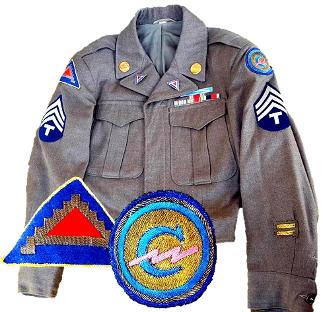
Constabulary uniform from a Milwaukee veteran that served first with the 7th Army (which inactivated in 1946 before later returning to Germany in the 1950s) and Constabulary. Note the bullion German-made patches.
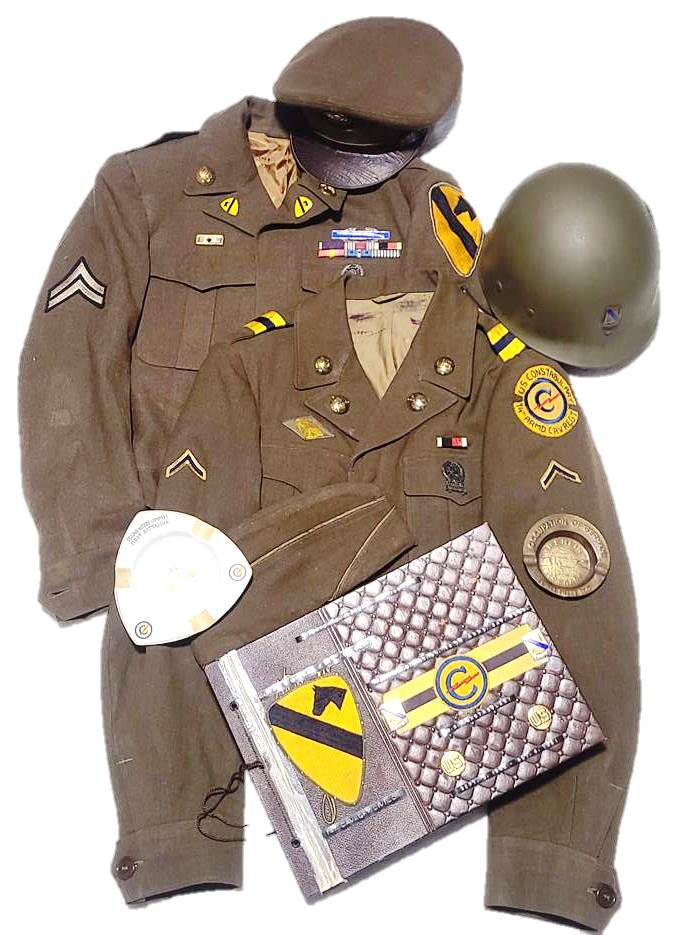
Uniform group from a Minnesota veteran. He served in the 14th Armored Cavalry/Constrabulary in Germany from 1948-9, and then in Korea with the 7th Cavalry. He was wounded in combat and discharged in 1951.

Training documents for Constabulary forces in the US Zone. These include troopers' training manuals and an ever-important road map of the US Zone.
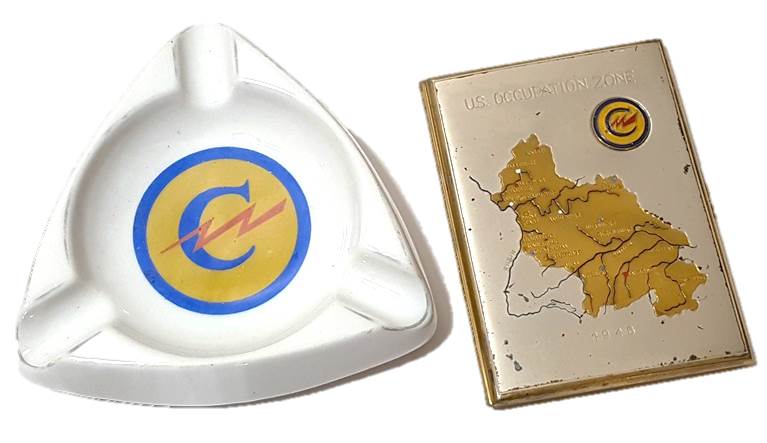
Constabulary ash tray and cigarette case.
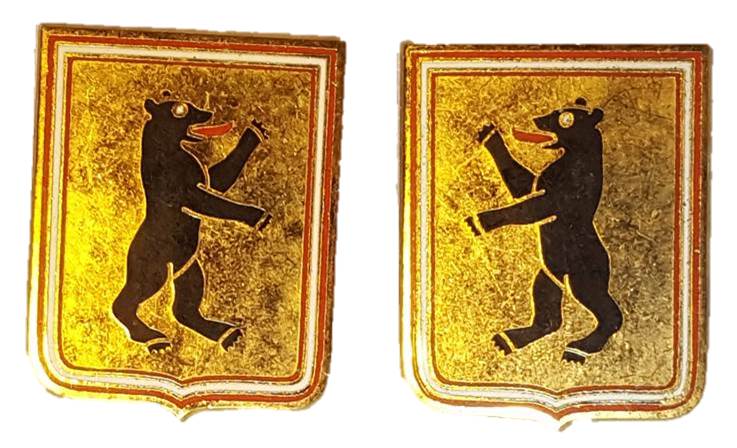
DIs of the 16th Constabulary in Berlin.
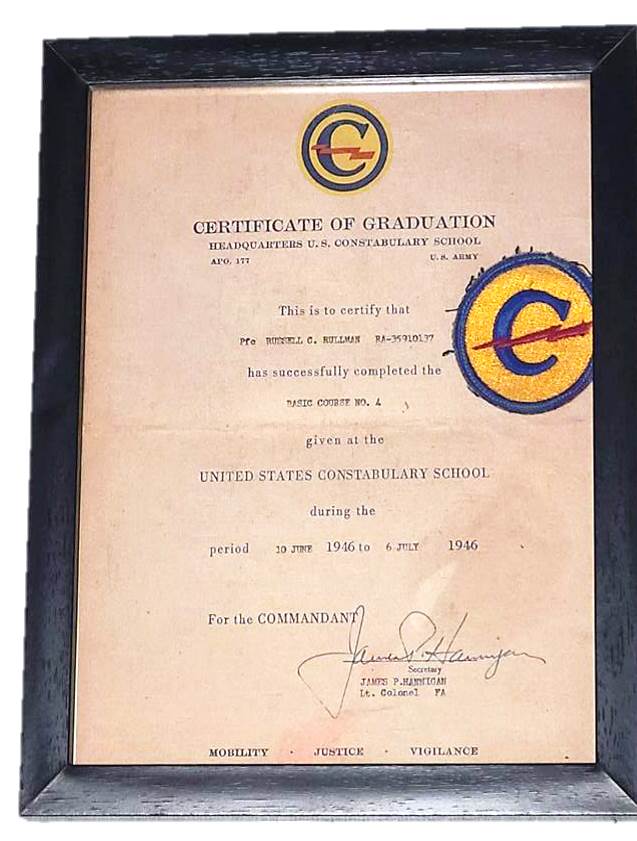
1946 Constabulary School graduation document
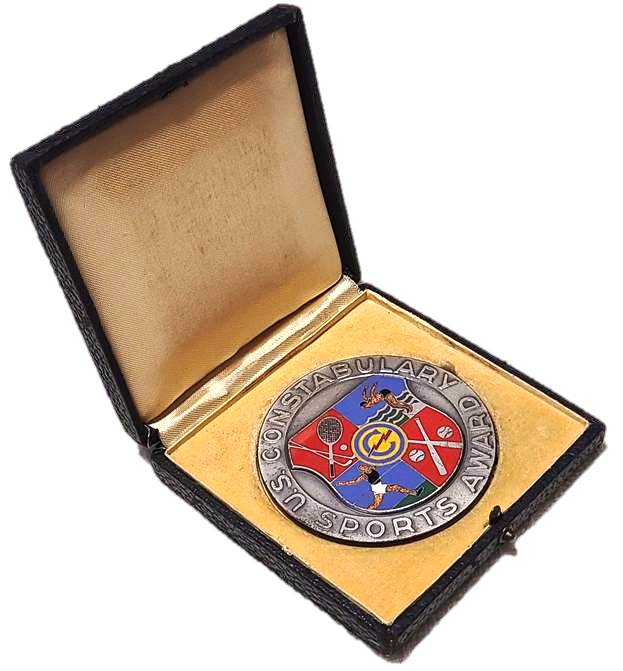
1950-dated Constabulary sports medal, for swimming
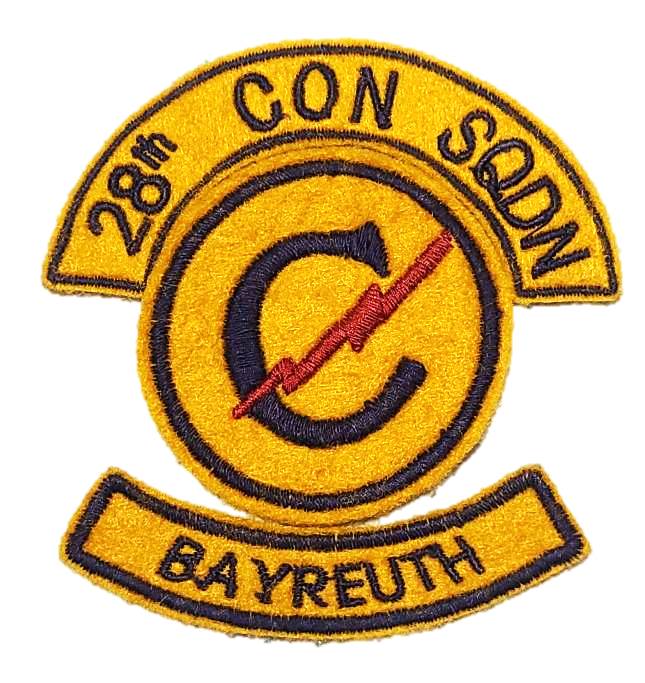
Unofficial patch and tabs
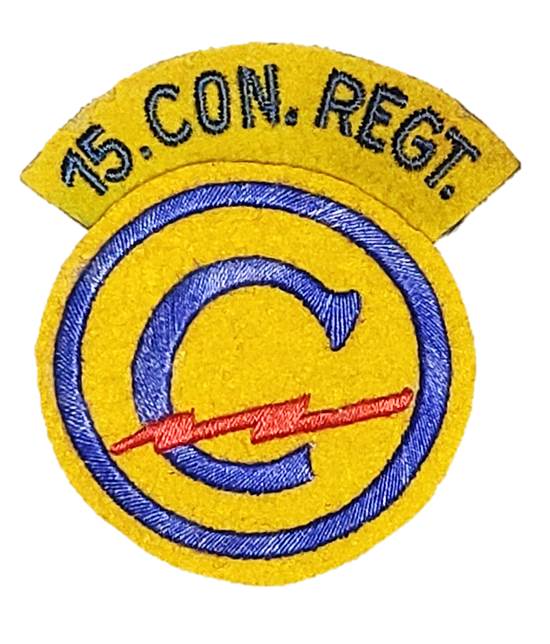
Patch and tab of the 15th Constabulary Regiment
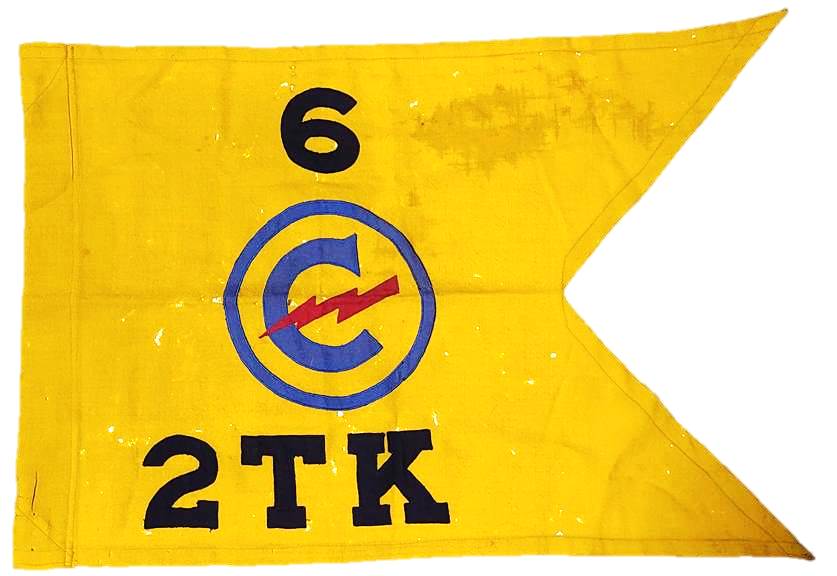
Guidon for the 2nd Tank Company of the 6th Constabulary Regiment.
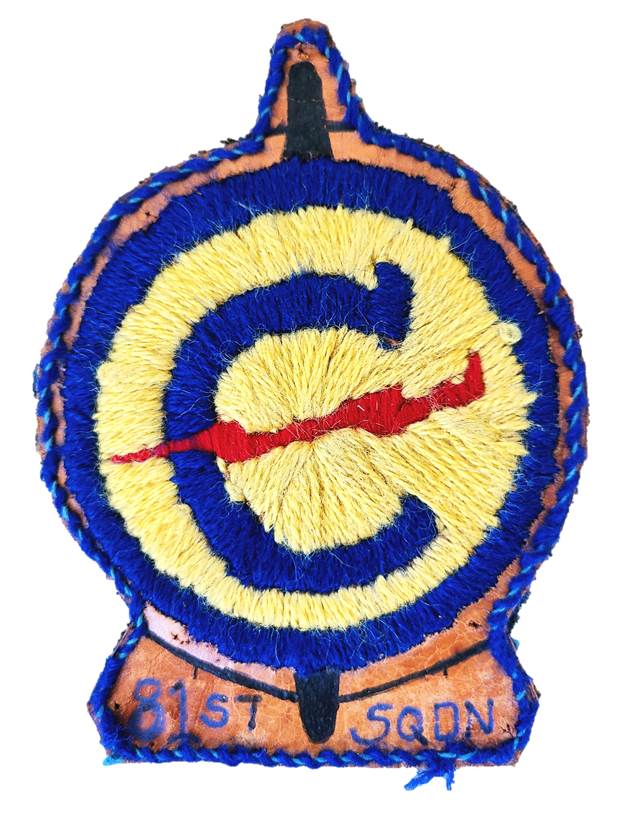
Awesome leather-backed pocket patch from the 81st Constabulary Squadron, which served in Fulda 1946-7.